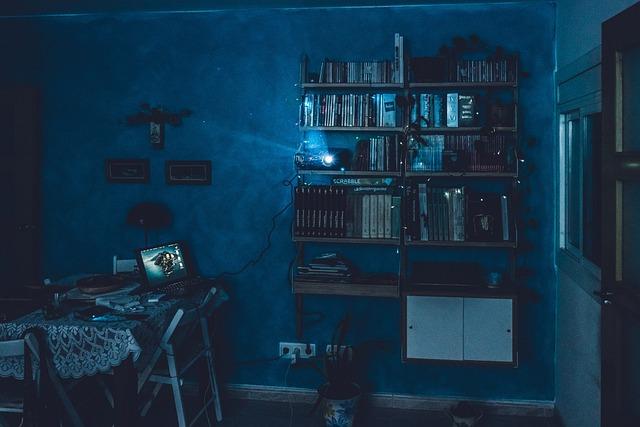In the glittering world of cinema, where red carpets unfurl and box office numbers reign supreme, the allure of big-budget films is undeniable. These cinematic giants, often adorned with dazzling special effects and star-studded casts, promise not just entertainment but an escape into the extraordinary. Yet, beneath the surface of these blockbuster spectacles lies a compelling question: do these financial behemoths trade creative ingenuity for commercial gain? As studios invest millions, seeking returns that echo in the halls of Hollywood, the delicate balance between artistic vision and profit margins becomes a topic of intrigue. This exploration delves into the heart of the film industry, examining whether the pursuit of commercial success inevitably stifles the creative spirit or if, perhaps, it can fuel a new kind of innovation.
Balancing Art and Commerce in Blockbuster Cinema
In the realm of blockbuster cinema, finding the sweet spot between artistic vision and financial gain often resembles a high-wire act. On one hand, directors and writers yearn to tell compelling stories that push creative boundaries. On the other, studios and investors seek a return on their hefty investments. This dichotomy can sometimes lead to a formulaic approach, where creativity takes a backseat to tried-and-true tropes. However, some films manage to strike a harmonious balance, becoming both critical darlings and box office juggernauts.
Consider the following factors influencing this delicate equilibrium:
- Audience Expectations: Catering to mass appeal can sometimes stifle innovation, yet understanding audience desires can also inspire groundbreaking storytelling.
- Risk vs. Reward: While safe choices often dominate, bold risks can result in unexpected successes, as seen with films that defy conventional norms.
- Technological Advances: The use of cutting-edge technology can enhance storytelling, but an over-reliance on visual effects might overshadow narrative depth.
Ultimately, the most memorable blockbusters are those that skillfully blend artistic integrity with commercial viability, creating experiences that resonate on multiple levels.

The Role of Creative Vision in High-Stakes Productions
In the world of high-stakes productions, creative vision serves as the lifeblood that fuels innovation and storytelling. Despite the immense financial pressures, these productions often rely on the unique perspectives of directors, writers, and designers to craft experiences that resonate with audiences. Creative vision can manifest in various ways:
- Innovative Storytelling: Pushing narrative boundaries to engage viewers emotionally.
- Visual Mastery: Crafting stunning visuals that captivate and linger in the memory.
- Bold Choices: Embracing risks in casting, music, and themes to stand out.
While commercial demands can sometimes steer the ship, it is the infusion of creativity that often elevates a production from mere spectacle to art. The challenge lies in maintaining this balance, ensuring that the artistic essence is not overshadowed by financial imperatives.

Innovative Storytelling vs. Box Office Demands
In the realm of cinema, the delicate balance between artistic vision and financial viability often presents a paradox. Innovative storytelling seeks to push boundaries, offering fresh narratives and unique perspectives that challenge audiences. However, the gravitational pull of box office demands can sometimes steer filmmakers towards more conventional paths. This tension is evident in the crafting of big-budget films, where creativity may be constrained by the need to cater to a broad audience.
Consider the following factors that influence this dynamic:
- Market Trends: The pressure to align with popular genres or franchises can lead to formulaic storytelling.
- Audience Expectations: Aimed at mass appeal, films might prioritize familiar tropes over novel ideas.
- Financial Risk: With substantial investments at stake, studios may prefer tried-and-true narratives to ensure returns.
While the allure of commercial success is undeniable, the question remains: can creativity thrive within these constraints, or does it inevitably become a casualty in the pursuit of profit?

Strategies for Fostering Creativity in Big-Budget Projects
- Embrace Collaborative Storytelling: In large-scale productions, harness the power of diverse voices. Encourage writers, directors, and artists to contribute their unique perspectives. This can be achieved through workshops and brainstorming sessions, where ideas are freely exchanged and refined. By fostering an environment where everyone feels valued, innovative concepts can emerge that might otherwise be overlooked.
- Allocate a Flexible Budget for Experimentation: While maintaining a focus on financial prudence, reserve a portion of the budget for creative experimentation. This could include funding for unexpected artistic endeavors, like hiring avant-garde artists or investing in cutting-edge technology. Allowing room for trial and error can lead to groundbreaking visual or narrative elements that set the project apart.
- Implement Iterative Feedback Loops: Establish a system where feedback is continuously gathered from a broad range of stakeholders, including the creative team, test audiences, and industry experts. Regular reviews and revisions can help maintain a balance between creative vision and commercial appeal, ensuring that the project evolves while staying true to its core.
- Encourage Risk-Taking Within Boundaries: Create a safe space for taking calculated risks. Encourage team members to push boundaries and explore unconventional ideas, while providing clear guidelines to prevent straying too far from the project’s objectives. This approach nurtures a culture of innovation without compromising the project’s marketability.

